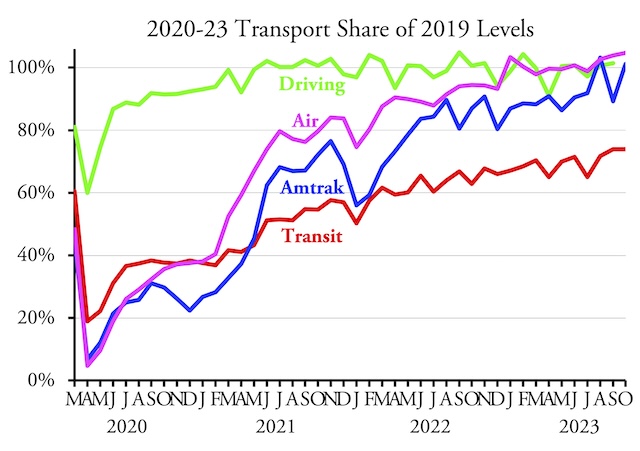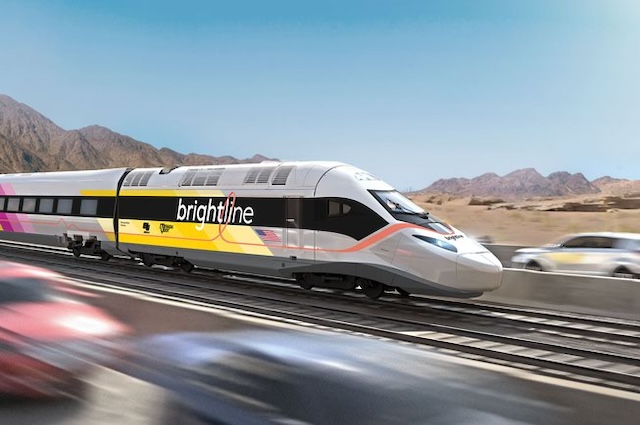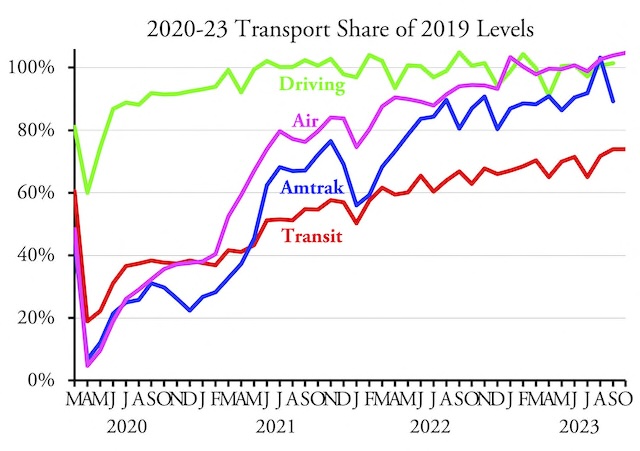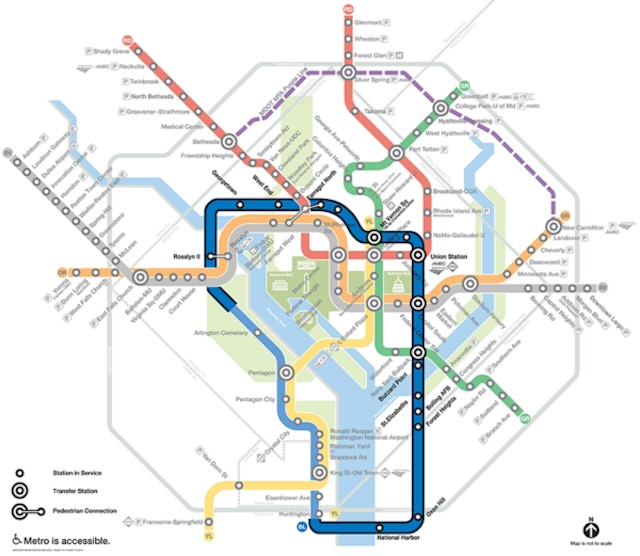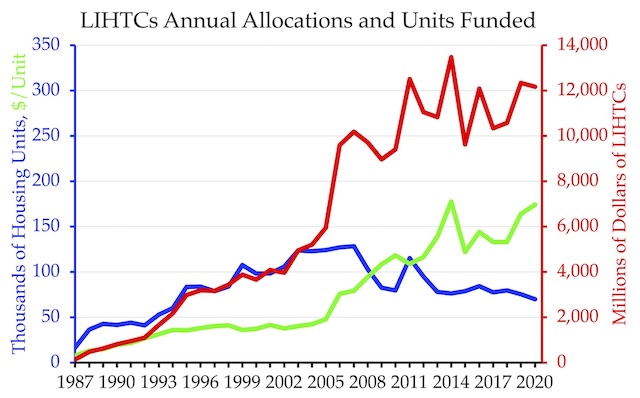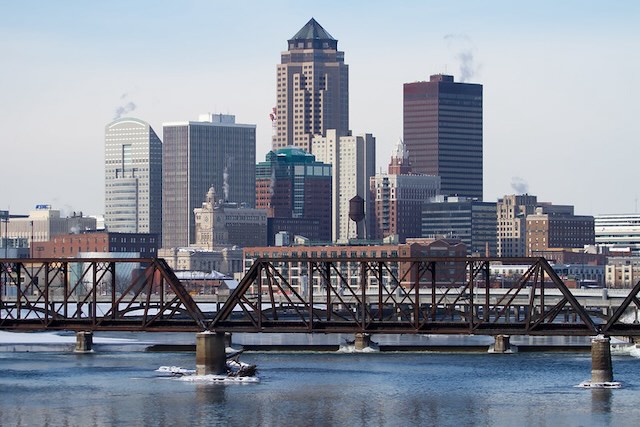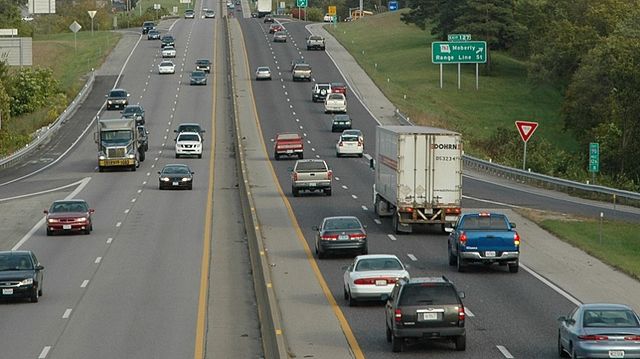Amtrak carried 101.1 percent as many passenger-miles in October 2023 as in the same month of 2019, according to Amtrak’s monthly performance report. This is the second time in three months that Amtrak carried more than 100 percent of pre-COVID numbers. I’m not sure why it fell to less than 90 percent in September, but August and October numbers suggest that the state-owned company has mostly recovered from the pandemic.
See last week’s post for a review of transit and air travel. October highway data are not yet available but will be posted here when it comes out.
Amtrak divides its trains into the Northeast Corridor, long-distance trains, and state-supported trains mostly operate within a state or between two states. Of these, the Boston-Washington trains are doing best, carrying 11.3 percent more riders than in 2019, and long-distance trains are next at 4.2 percent. However, the state-supported trains carried just 92.5 percent as many riders as in 2019. Continue reading

